Oxfordshire Mind’s Physical Activity Team are offering a weekly ‘virtual walk’, this week the team are visiting Yucatan Peninsula in Mexico.
Happy Halloween, everyone.
This is a time of year where we’re celebrating all things spooky. So for a specially themed walk, I thought we’d visit somewhere where, legend says, you can come face to face with a gateway to the underworld. The Yucatan Peninsula in Mexico is best known for its pristine beaches and ancient Mayan ruins, most famously the magnificent pyramid at Chichen Itza. When you think of this region, you think sipping ice-cold fruit juice on the beach in Cancun, not coming face to face with the supernatural.
But there’s a secret, hidden side to this bright, brash tropical wonderland. The region is home to hundreds of underground pools, known as cenotes, admired and feared by the Maya people in equal measure as portals to the realm below. These deep, still pools, sunk deep into the ground or hidden away in caves, have a unique kind of mystique, and you can see why in the olden days, the gods were placated here with offerings of precious objects like jewellery and weapons.
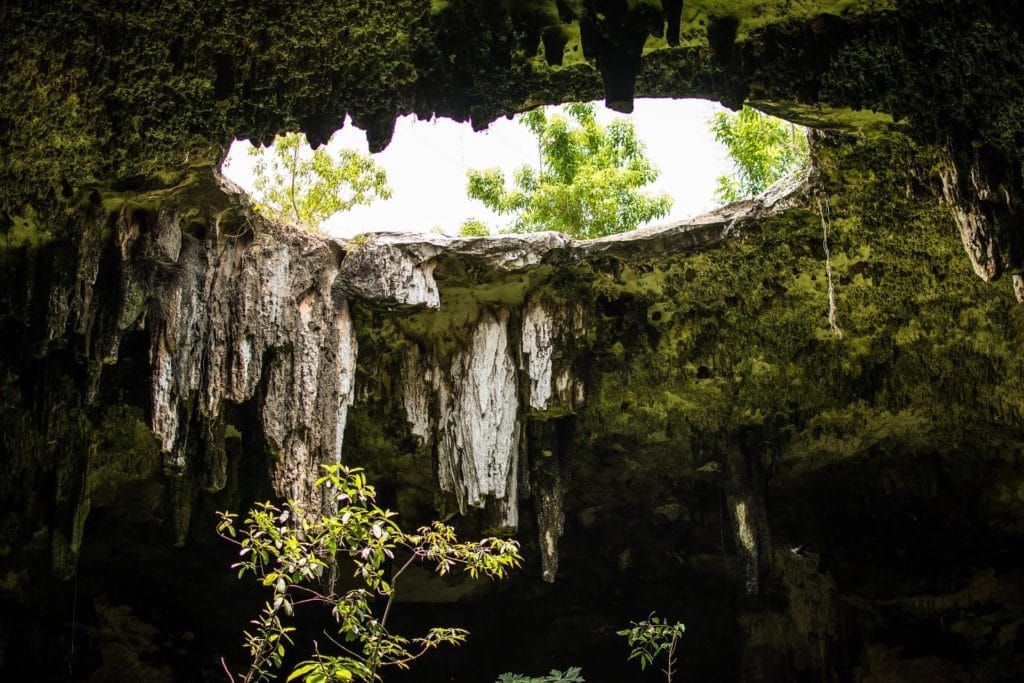
These days hundreds of eager visitors swarm to swim in their crystal-clear waters. But local people still wouldn’t venture into one after dark. We’re going to be visiting one of them ourselves to see what all the fuss is about. But don’t worry – it’s unlikely that we’ll be pulled through to the other side. At least, I hope not.
First, Chichen Itza. The cenote we’re visiting, Ik Kil Cenote, is right next door to the most famous historical site in Central America, and it would be silly to come all this way and not see it. Our tour bus drops us off outside, and we begin to wander around. This site was the centre of a thriving, multicultural empire, with a huge diversity of influences and architectural styles. Although today all the structures are the same uniform grey of the stones they’re built from, back in the day they would have been brightly painted in reds, greens, blues and purples. You have to picture it as it was then, colourful and busy, thronged with people speaking all sorts of different languages.
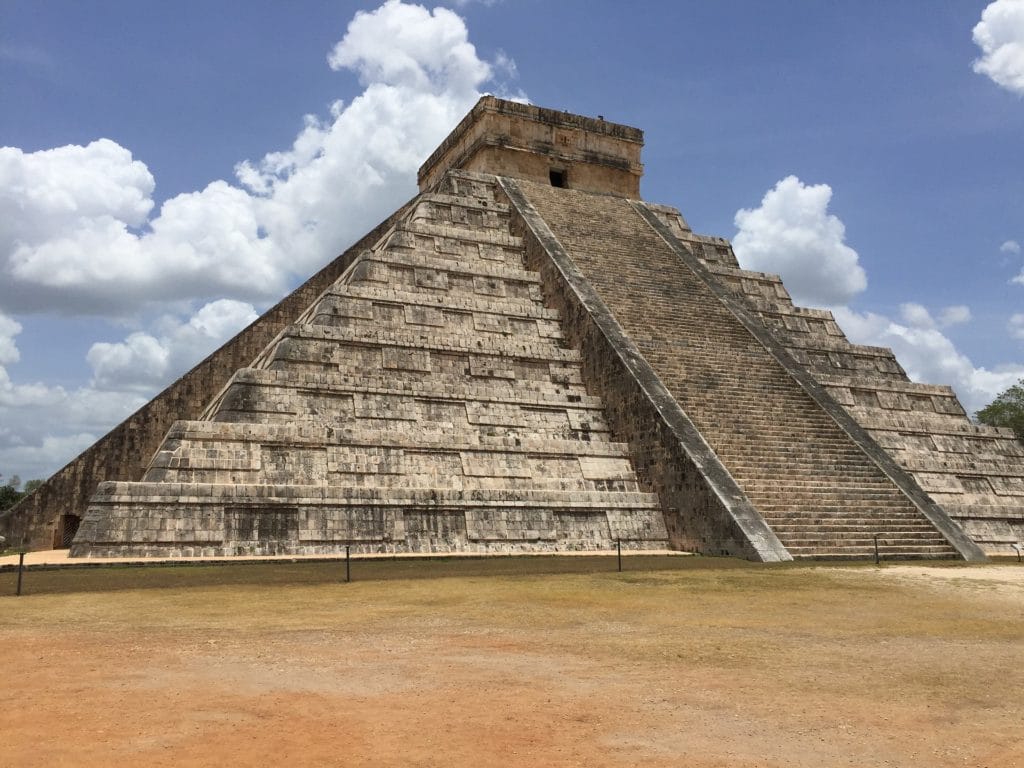
First of all we make our way to the famous pyramid at the centre of the complex, the temple to the serpent god Kulkulkan. Rearing up 38 metres high, it was designed to impress, and to terrify. At the spring and autumn equinoxes, a particularly awe-inspiring event occurs here; the shadows cast by the steps of the pyramid make it look as if a serpent is wriggling its way down the sides of the temple. Spooky. There’s debate about whether this was intentional on the part of the Maya or just a happy accident, but given what we know about their mastery of astrology and architecture, it’s hard to believe it wasn’t planned.
There are also real reptiles to be found wandering around the area, See! There’s an iguana sunning itself on a nearby step. It turns its head towards us with all the slow, stiff dignity of a royal wave and blinks at us slowly. It knows it’s in charge here, and has no intention of moving. We’d better move on ourselves and leave it in peace.
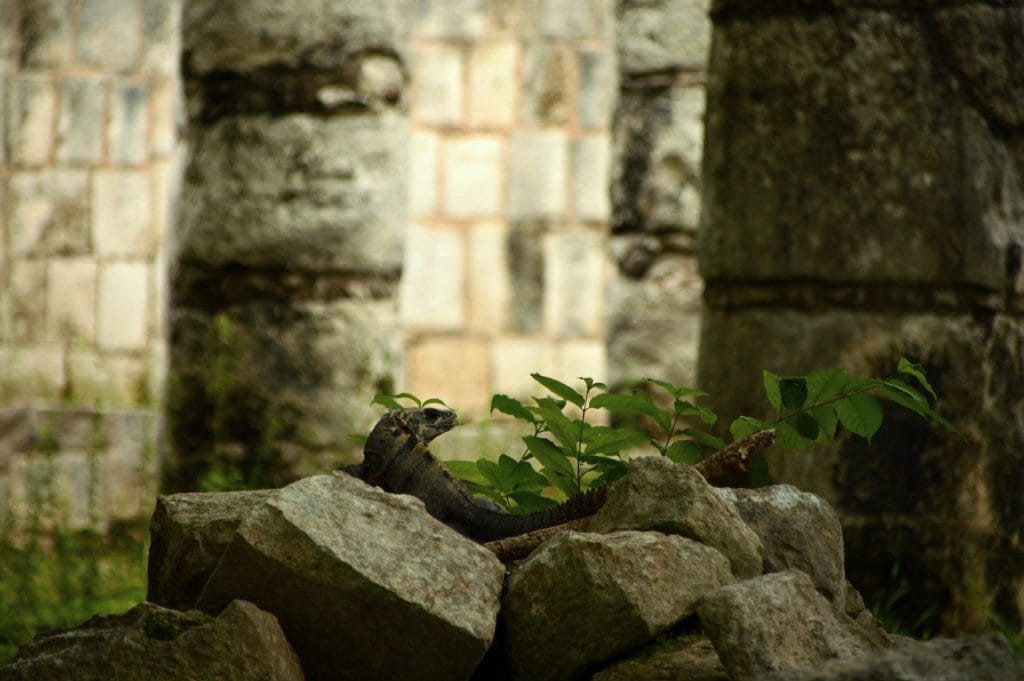
Over here is a large open court, where young Mayan men used to play a sort of ball game, a bit like basketball. You can actually see the stone hoops set into the walls on either side of the court, still standing after all this time.
After a long, hot walk around the ruins, I think it’s about time for our visit to the cenote. We hop back in the tour bus to go five minutes down the road. There are showers here, and changing rooms, and lockers, rather more like we were visiting Hinksey Outdoor Pool than the entrance to the nether realms. Still, we obediently prepare ourselves to meet our fate, changing and showering before making our way to the cenote.
The entrance to the cenote is a small, round opening which provides a glimpse of turquoise water nearly 30 feet below. We descend the stone steps down to the water line, past a thick curtain of vines that trail down through the opening. The roots you see mingled with the vines are from the ceiba tree, which you will often find next to a cenote. Maya legend sees the tree as a connector between all different parts of the universe, linking the underworld, the heavens and the mortal realms.
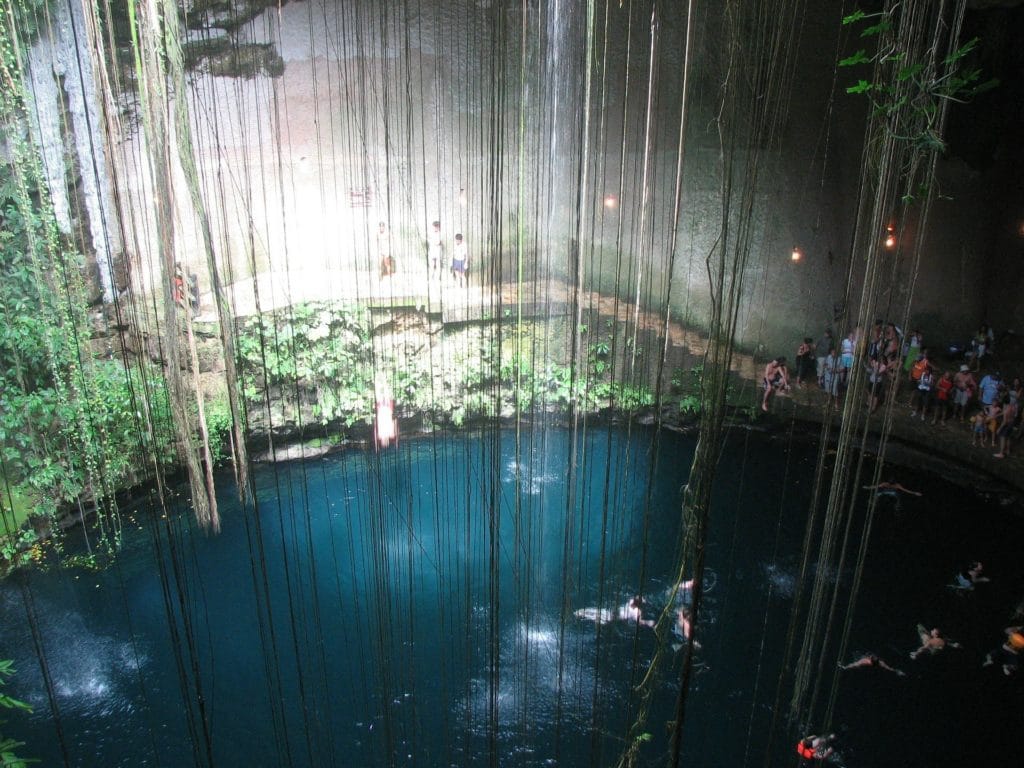
Finally we reach the diving platform next to the pool. From here, the cave entrance is like a natural skylight, sending a bright beam of sunlight down onto the surface of the pool below. The water is almost unnaturally blue, looking more like a broken-open geode than anything you could swim in. The surface of the water is scattered with a thousand points of light, so sharp and so glistening, you think you could almost cut yourself by touching them. But really the water is just incredibly still and very, very deep- it goes down almost fifty metres, apparently.
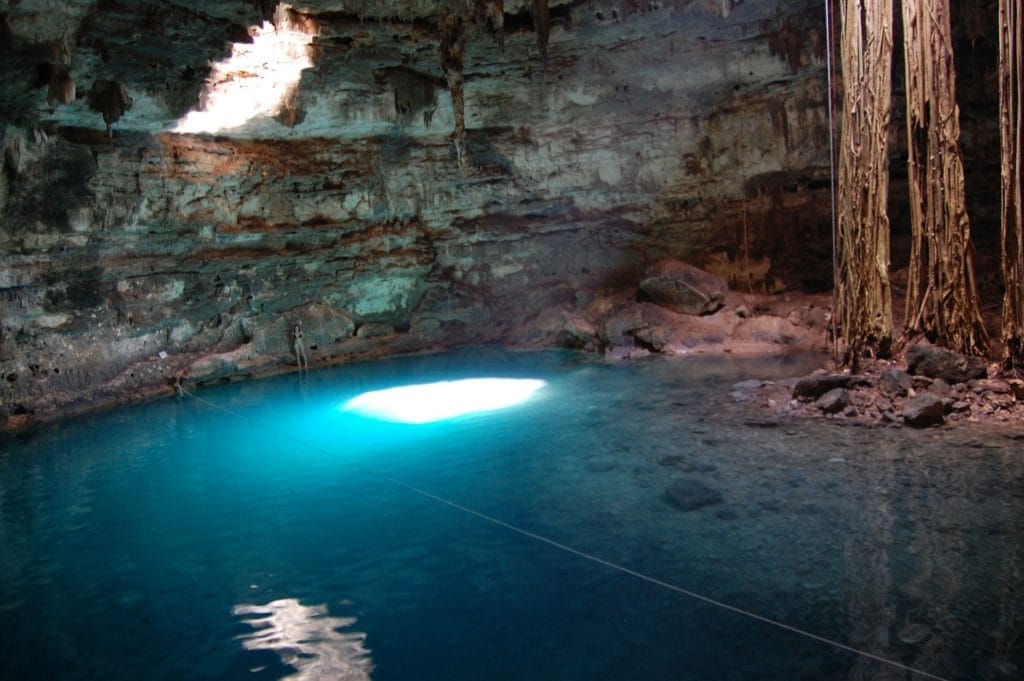
I don’t know how we’ve managed it, given how popular this place is, but somehow we’ve come at a time when there is no one else in the cenote with us. It’s so quiet you can hear the slow drip, drip of water, somewhere deep in the cave. Somehow, we don’t feel scared now we’re here. There’s something very peaceful about the cool semi-darkness of this secret place. Well, nothing else for it but to take the plunge.
“Somehow, we don’t feel scared, now we’re here. There’s something very peaceful about the cool semi-darkness of this secret place.”
Brr! The water is absolutely freezing cold. But after a moment, you get used to it, and start to do a few slow laps of the pool. You can see dozens of tiny little catfish darting around you as you swim. Sometimes you hold onto the sides, stopping to peer down into the water, trying to see if you can see the bottom. Slowly, you start to cool down from the heat of the day.
Do you know what? This doesn’t seem very scary at all. Why don’t we stay here a little while longer? We’ve still got a bit of time before dark, after all. See you next week for another walk.


